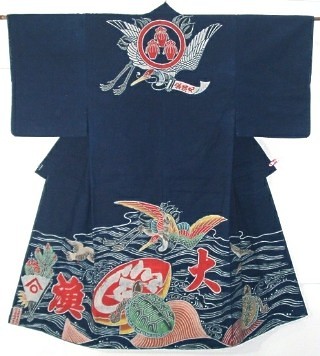You'll also notice that Sass and Bide (heavily featured in the Myer campaign as they recently managed to 'steal' the brand from DJs) features woven ikat or kasuri textiles.

http://www.dailytelegraph.com.au/news/gallery/gallery-e6frewxi-1226095098878?page=12
This Rappers & Drag Queens ikat print dress by Sass and Bide is a prime example. Ikat (kasuri in Japanese) is a 'resist' dying technique in which the fibres are dyed before they are woven. Threads are bundled together and patterned with a 'resist' such as wax or tightly bound thread which prevents dies from colouring certain areas of the threads. These are then woven together to produce various patterns such as the one in the sass and bide dress.
Ikat production is found all over the world from Central and South America, Central Asia, South East Asia and East Asia.
In Japan kasuri was produced all over the country. Resist dying also includes 'shibori' (tie dye), 'katazome' (wax dying) and 'meisen' styles.
For more on kasuri and ikat see: http://e-gasuri.com/exhibit/krauss-presentation.pdf
This Rappers & Drag Queens ikat print dress by Sass and Bide is a prime example. Ikat (kasuri in Japanese) is a 'resist' dying technique in which the fibres are dyed before they are woven. Threads are bundled together and patterned with a 'resist' such as wax or tightly bound thread which prevents dies from colouring certain areas of the threads. These are then woven together to produce various patterns such as the one in the sass and bide dress.
Ikat production is found all over the world from Central and South America, Central Asia, South East Asia and East Asia.
In Japan kasuri was produced all over the country. Resist dying also includes 'shibori' (tie dye), 'katazome' (wax dying) and 'meisen' styles.
For more on kasuri and ikat see: http://e-gasuri.com/exhibit/krauss-presentation.pdf





No comments:
Post a Comment